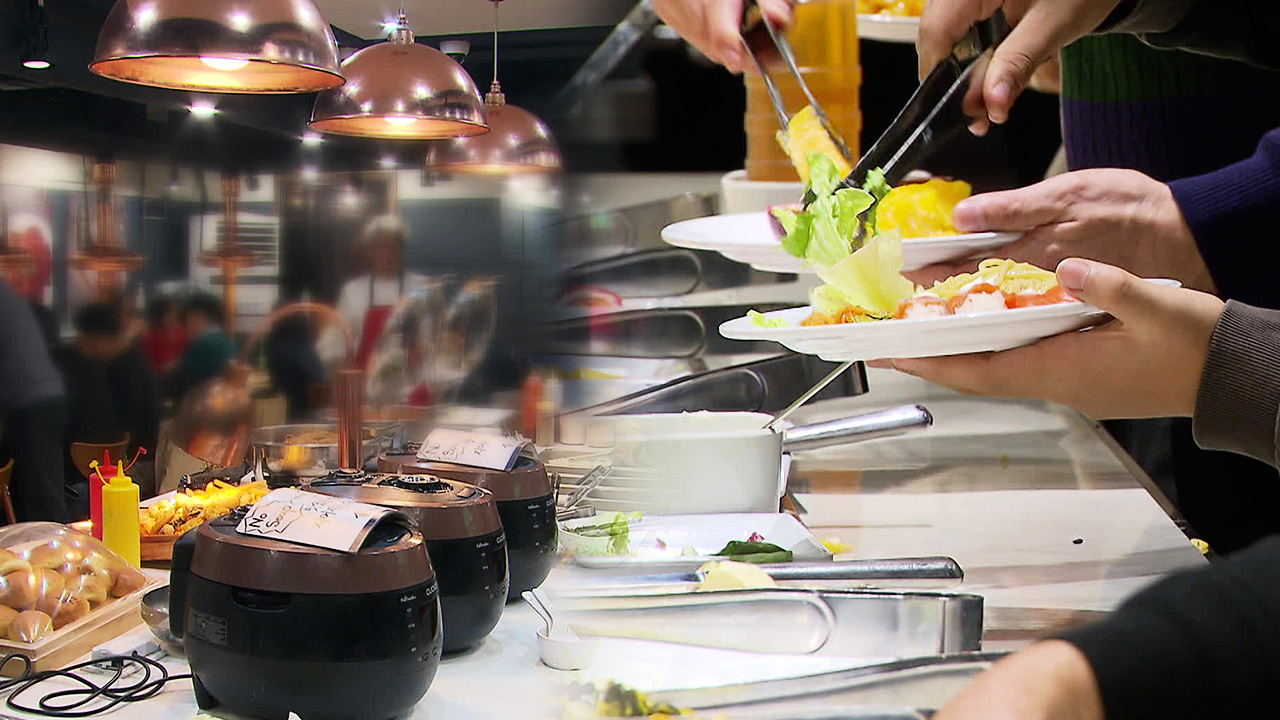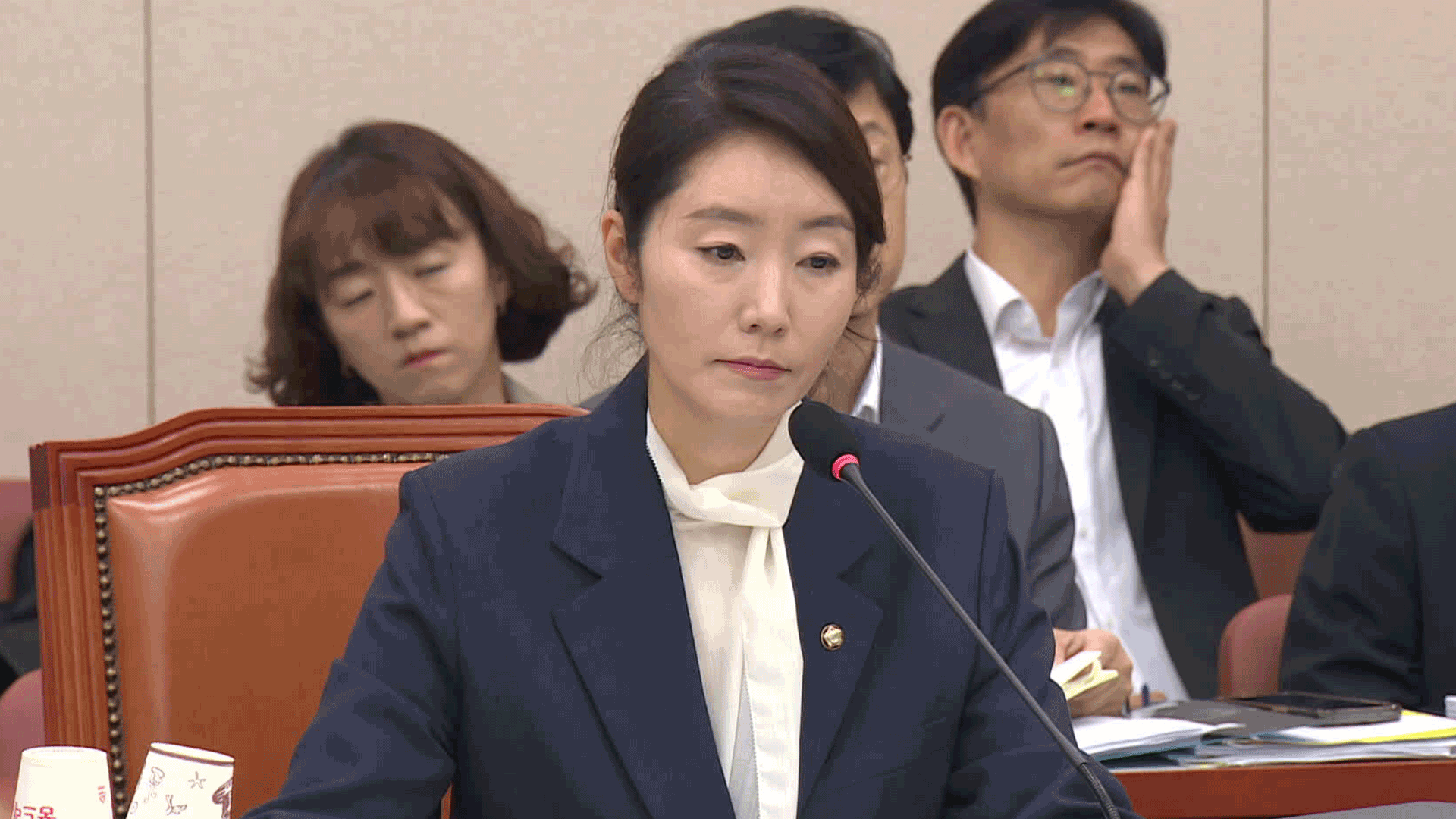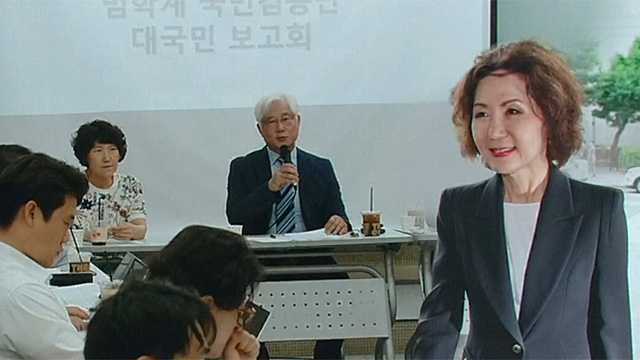[Anchor]
In the restaurant industry, so-called recession-type consumption and frugal spending are becoming prominent.
This means that consumers are more cautious about opening their wallets.
As a result, cost-effective restaurants, such as all-you-can-eat and buffets, are gaining popularity.
Reporter Jo Eun-ae visited the scene.
[Report]
A restaurant bustling with office workers during dinner time.
Plates are piled high with everything from meat to salad, and it costs less than 20,000 won per person.
[Nam Ho-jun/yangcheon-gu, Seoul: "I think I chose this place because I can eat unlimited for just 19,000 won."]
Buffet-style restaurants, which were hit hard by COVID-19, are finally regaining their vitality.
Last year, the sales of this buffet franchise increased by 70% in just one year.
The number of locations has also increased to more than 30.
The secret to their popularity is, of course, 'price' that does not exceed 20,000 won.
[Kim Hak-gon/yeongdeungpo-gu, Seoul: "I still think this is the most formal place and also offers good value for money."]
An AI platform company analyzed the restaurant industry, and found that in November of last year, buffet sales increased the most among 14 restaurant categories.
Compared to a year ago, sales of snacks and chicken have actually decreased, while the buffet sector saw an increase of over 30%.
[Lee Young-ae/Professor of Consumer Studies, Incheon University: "Economic difficulties and the uncertainty that the situation will not be resolved in the near future can have an impact. It seems likely to be prolonged."]
Despite this growth trend, the industry's concerns are deepening.
The key issue is whether they can maintain the 'cost-effectiveness' amid rising raw material prices.
Restaurant companies are focusing on attracting consumers by lowering distribution costs as much as possible to maintain price competitiveness.
KBS News, Jo Eun-ae.
In the restaurant industry, so-called recession-type consumption and frugal spending are becoming prominent.
This means that consumers are more cautious about opening their wallets.
As a result, cost-effective restaurants, such as all-you-can-eat and buffets, are gaining popularity.
Reporter Jo Eun-ae visited the scene.
[Report]
A restaurant bustling with office workers during dinner time.
Plates are piled high with everything from meat to salad, and it costs less than 20,000 won per person.
[Nam Ho-jun/yangcheon-gu, Seoul: "I think I chose this place because I can eat unlimited for just 19,000 won."]
Buffet-style restaurants, which were hit hard by COVID-19, are finally regaining their vitality.
Last year, the sales of this buffet franchise increased by 70% in just one year.
The number of locations has also increased to more than 30.
The secret to their popularity is, of course, 'price' that does not exceed 20,000 won.
[Kim Hak-gon/yeongdeungpo-gu, Seoul: "I still think this is the most formal place and also offers good value for money."]
An AI platform company analyzed the restaurant industry, and found that in November of last year, buffet sales increased the most among 14 restaurant categories.
Compared to a year ago, sales of snacks and chicken have actually decreased, while the buffet sector saw an increase of over 30%.
[Lee Young-ae/Professor of Consumer Studies, Incheon University: "Economic difficulties and the uncertainty that the situation will not be resolved in the near future can have an impact. It seems likely to be prolonged."]
Despite this growth trend, the industry's concerns are deepening.
The key issue is whether they can maintain the 'cost-effectiveness' amid rising raw material prices.
Restaurant companies are focusing on attracting consumers by lowering distribution costs as much as possible to maintain price competitiveness.
KBS News, Jo Eun-ae.
■ 제보하기
▷ 카카오톡 : 'KBS제보' 검색, 채널 추가
▷ 전화 : 02-781-1234, 4444
▷ 이메일 : kbs1234@kbs.co.kr
▷ 유튜브, 네이버, 카카오에서도 KBS뉴스를 구독해주세요!
- Trend of cost-effective dining
-
- 입력 2025-01-26 23:58:42

[Anchor]
In the restaurant industry, so-called recession-type consumption and frugal spending are becoming prominent.
This means that consumers are more cautious about opening their wallets.
As a result, cost-effective restaurants, such as all-you-can-eat and buffets, are gaining popularity.
Reporter Jo Eun-ae visited the scene.
[Report]
A restaurant bustling with office workers during dinner time.
Plates are piled high with everything from meat to salad, and it costs less than 20,000 won per person.
[Nam Ho-jun/yangcheon-gu, Seoul: "I think I chose this place because I can eat unlimited for just 19,000 won."]
Buffet-style restaurants, which were hit hard by COVID-19, are finally regaining their vitality.
Last year, the sales of this buffet franchise increased by 70% in just one year.
The number of locations has also increased to more than 30.
The secret to their popularity is, of course, 'price' that does not exceed 20,000 won.
[Kim Hak-gon/yeongdeungpo-gu, Seoul: "I still think this is the most formal place and also offers good value for money."]
An AI platform company analyzed the restaurant industry, and found that in November of last year, buffet sales increased the most among 14 restaurant categories.
Compared to a year ago, sales of snacks and chicken have actually decreased, while the buffet sector saw an increase of over 30%.
[Lee Young-ae/Professor of Consumer Studies, Incheon University: "Economic difficulties and the uncertainty that the situation will not be resolved in the near future can have an impact. It seems likely to be prolonged."]
Despite this growth trend, the industry's concerns are deepening.
The key issue is whether they can maintain the 'cost-effectiveness' amid rising raw material prices.
Restaurant companies are focusing on attracting consumers by lowering distribution costs as much as possible to maintain price competitiveness.
KBS News, Jo Eun-ae.
In the restaurant industry, so-called recession-type consumption and frugal spending are becoming prominent.
This means that consumers are more cautious about opening their wallets.
As a result, cost-effective restaurants, such as all-you-can-eat and buffets, are gaining popularity.
Reporter Jo Eun-ae visited the scene.
[Report]
A restaurant bustling with office workers during dinner time.
Plates are piled high with everything from meat to salad, and it costs less than 20,000 won per person.
[Nam Ho-jun/yangcheon-gu, Seoul: "I think I chose this place because I can eat unlimited for just 19,000 won."]
Buffet-style restaurants, which were hit hard by COVID-19, are finally regaining their vitality.
Last year, the sales of this buffet franchise increased by 70% in just one year.
The number of locations has also increased to more than 30.
The secret to their popularity is, of course, 'price' that does not exceed 20,000 won.
[Kim Hak-gon/yeongdeungpo-gu, Seoul: "I still think this is the most formal place and also offers good value for money."]
An AI platform company analyzed the restaurant industry, and found that in November of last year, buffet sales increased the most among 14 restaurant categories.
Compared to a year ago, sales of snacks and chicken have actually decreased, while the buffet sector saw an increase of over 30%.
[Lee Young-ae/Professor of Consumer Studies, Incheon University: "Economic difficulties and the uncertainty that the situation will not be resolved in the near future can have an impact. It seems likely to be prolonged."]
Despite this growth trend, the industry's concerns are deepening.
The key issue is whether they can maintain the 'cost-effectiveness' amid rising raw material prices.
Restaurant companies are focusing on attracting consumers by lowering distribution costs as much as possible to maintain price competitiveness.
KBS News, Jo Eun-ae.
이 기사가 좋으셨다면
-
좋아요
0
-
응원해요
0
-
후속 원해요
0











![[단독] “윤석열·김용현 등 공모해 군사상 이익 해쳐”<br>…외환죄 대신 일반이적죄 적용](/data/layer/904/2025/07/20250714_3VTJV3.jpg)




이 기사에 대한 의견을 남겨주세요.